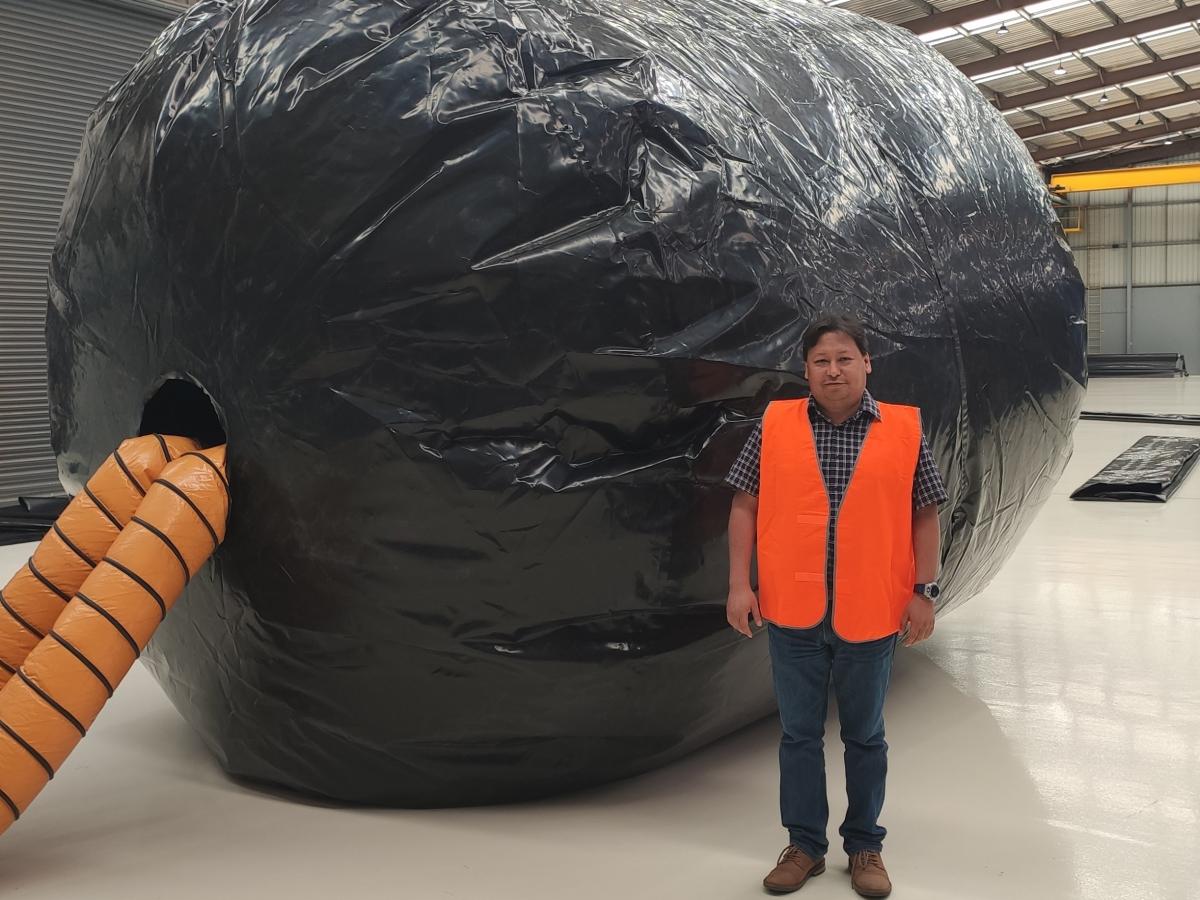
Dr Bellido Caceres in front of a geomembrane at Aquamate's facility.
University of Adelaide researchers are part of an international team that aims to unlock the secrets of the universe above the southern hemisphere. The team is piloting a project that will use sensors installed in water tanks to detect the highest energy gamma rays from the universe. Prototype water tanks have been designed and built in South Australia and will be installed in Peru.
"Capturing photons with energies well above peta electronvolts (1015 eV) - the highest energy photons - from the universe is key to unlocking its darkest secrets," said the University of Adelaide's Dr Jose Bellido Caceres who is an astronomer in the School of Physical Sciences and is leading the project in Peru.
When the gamma rays enter the atmosphere, they produce energetic secondary particles that emit Cherenkov light as they pass through water or air, producing a blue streak that can be recorded. Ground-based gamma-ray observatories can use dense arrays of water tanks spread over a large area or an array of optical telescopes to capture this Cherenkov light to measure the angle-of-arrival and energy of the gamma rays.
"Although there are observatories, capable of detecting peta electronvolts gamma rays (PeVatrons), located in the northern hemisphere none are yet installed in the southern hemisphere and so we have no measurements of peta electronvolts gamma rays produced by pulsars and super nova remnants from the southern parts of our galaxy, from where we have the best view."
An observatory in China first detected peta electronvolts gamma rays in 2021.
"This project could help to discover new information about the remotest parts of the universe."Professor Peter Veitch, Head of School of Physical Sciences
The Southern Widefield Gamma-ray Observatory (SWGO) in South America will be the first observatory in the southern hemisphere capable of surveying the sky in search of peta electronvolts gamma rays.
"Peru is an ideal location for the proposed SWGO due to its high elevation sites that are near water resources," said Dr Bellido Caceres.
"A high elevation site enables the secondary particles to be detected before they are completely absorbed by the atmosphere and large water resources are required to fill the water tanks."
The SWGO will use 6500 water tanks spread over one square kilometre. The tanks at the heart of the project built by South Australian company Aquamate are no ordinary humble Aussie water tanks.
"The custom-built tanks contain a geomembrane that creates a light tight environment, the perfect condition for the sensors to record the Cherenkov light produced by the secondary particles as they arrive," said Dr Bellido Caceres.
Three prototype tanks are being sent to the Arequipa, Peru as part of the pilot project that is expected to begin testing in the first half of 2022. When the SWGO gets the go-ahead, the company could win a $40 million contract to supply the remaining tanks
"This project could help to discover new information about the remotest parts of the universe," said the University of Adelaide's Professor Peter Veitch, Head of School of Physical Sciences.
"It has been enabled by the collaboration between the University of Adelaide and industry partner Aquamate which is a global leader in the design, engineering and manufacture of large water storage tanks that are supplied flat packed to remote locations world-wide."
Danny Di Iorio is CEO and owner of Aquamate which is located south of Adelaide.
"We are excited by the opportunity to use our world-class expertise to design and build large prototype water tanks for the SWGO pilot project," he said.






